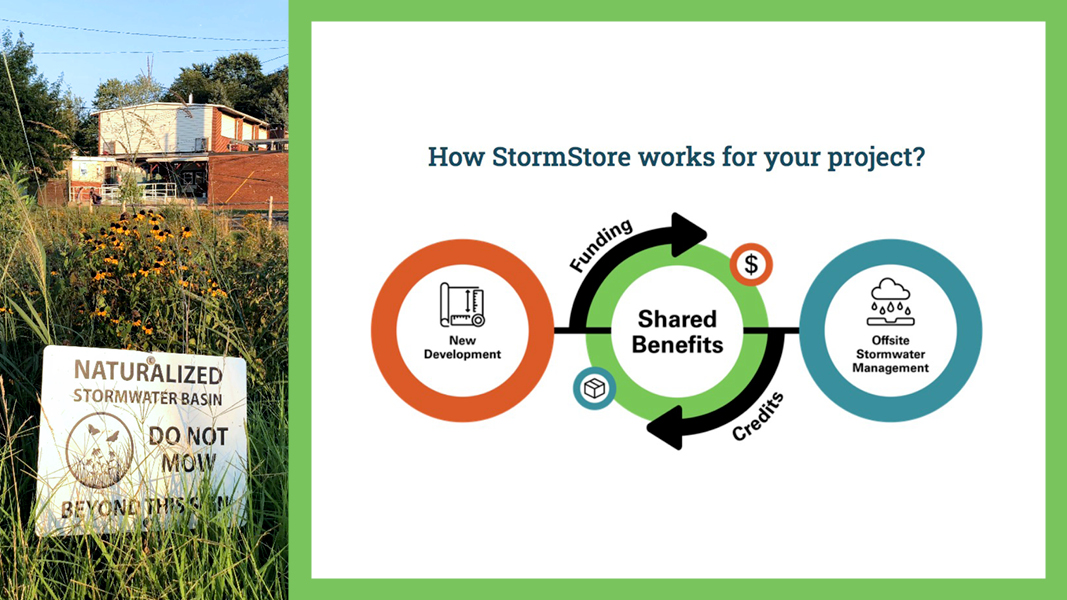A storm water detention and retention credit trading pilot program was established in 2022 in Cook County, Illinois to facilitate land developers’ compliance with a 2014 Metropolitan Water Reclamation District (MWRD) Watershed Management Ordinance that requires (re)development projects to manage storm water onsite through retention, detention and runoff release limits. Cost of implementation, limitations due to site conditions, retrofitting legacy development and 2020 updates to the ordinance that imposed stricter release rates have all contributed to developers’ challenges to comply with the ordinance. The trading pilot allows developers to use a mix of onsite and offsite storage facilities for storm water management. The approach decouples storm water management from development, encourages reuse of marginal land, reduces local flooding and incentivizes green infrastructure. Landowners can invest in green infrastructure, and then sell the credits for the storm water retained to the developer. To facilitate trading, the StormStore™ marketplace was created to buy and sell the credits. The landowner procures a permit from MWRD to install new, voluntary green infrastructure. The developer buys the credits, reducing its project costs and ensuring compliance with the ordinance.
Pekny Park Rain Garden, located in Riverdale, is an example of how StormStore works. The 8.5-acre park had been struggling with flooding for years, impacting its use for community events and recreational activities. The Rain Garden was created in response to a community-driven flood assessment called Rain Ready, which identified Pekny Park as one of the locations often prone to flooding. The Rain Garden provides retention of over 11,000 gallons of runoff from park areas and adjacent streets, alleviating local flooding and providing a new wildlife habitat. StormStore credits available from Pekny Park Green Infrastructure are 0.0360 acre-feet of volume control.










